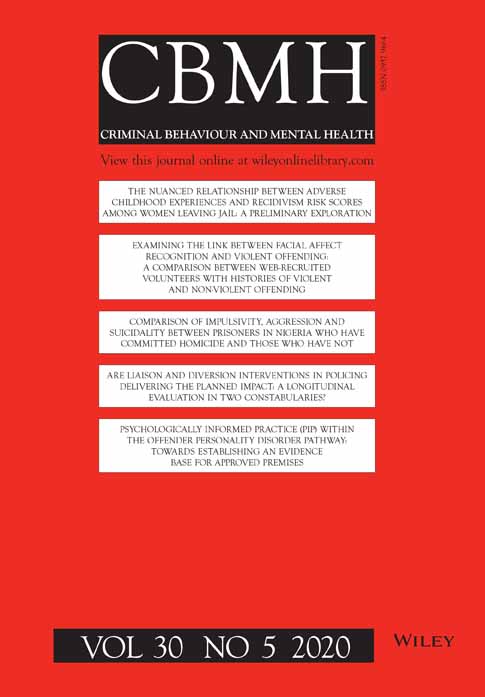The nuanced relationship between adverse childhood experiences and recidivism risk scores among women leaving jail: A preliminary exploration
Abstract
Background
Women with histories of childhood trauma tend to score higher on recidivism risk/needs assessment tools, such as the Level of Service Inventory-Revised: Screening Version (LSI-R: SV). These may affect their chance of leaving custody, but risk scores may be inflated by reliance on additional items which reflect other fixed childhood events.
Aims
We hypothesised that adverse childhood experiences (ACEs) would be related to immutable risk measures according to the LSI-R: SV, such as juvenile arrest history, rather than more mutable factors, such as criminal attitudes.
Methods
Two interviewer-administered questionnaires—one about ACEs and one about criminogenic risk and needs—were given to a cohort of women just after release from jail. Phi coefficients were used to test for associations between ? ACE scale scores and scores on the risk tool—the LSI-R: SV.
Results
ACE scale items were related to static risk item scores from the LSI-R: SV, but not to any of the dynamic risk items except psychological health.
Conclusions
Risk reduction is an important task in the criminal justice system, for which systematic risk assessment is an integral part of decision making. Self-reported experience of psychological health apart, only fixed historical variables were related to estimated recidivism risk. There was no relationship between the mutable constructs of attitudes towards crime or employment status and estimated risk. This raises the question of whether the risk of recidivism is increased when there is a background of childhood trauma. Implications for using risk reduction tools to inform the need for trauma-informed correctional care are discussed. Longitudinal research assessing recidivism is needed to test this further.
CONFLICT OF INTEREST
The authors have no conflict of interest to declare.




